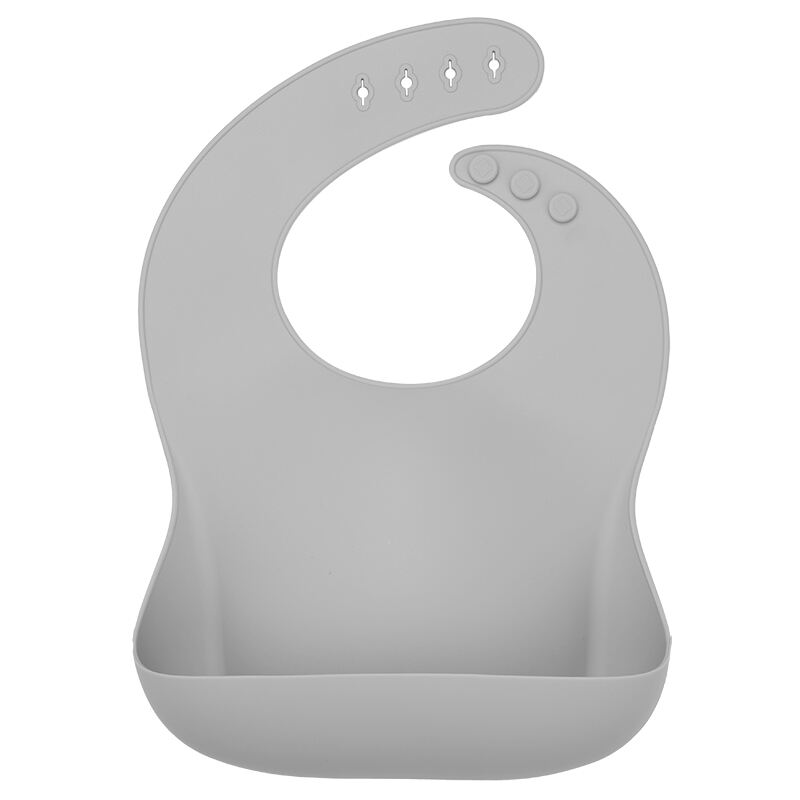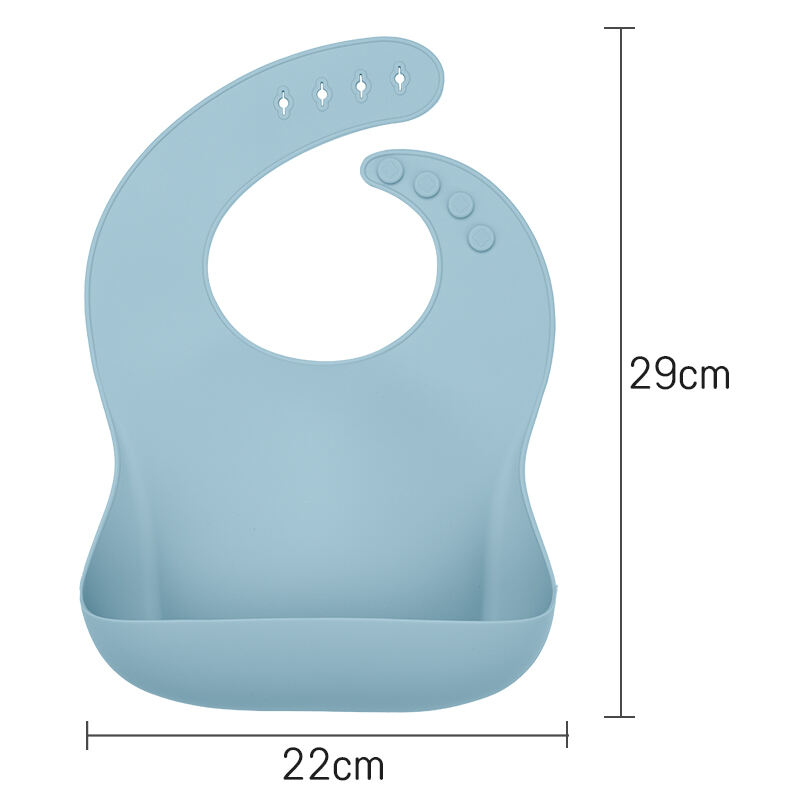The Modern Parent's Guide to Baby Bib Selection
Keeping your baby clean during mealtime is an ongoing challenge that every parent faces. As your little one explores new foods and develops their eating skills, choosing the right bib becomes crucial for maintaining cleanliness and ensuring a pleasant feeding experience. Silicone bibs have emerged as a popular alternative to traditional cloth bibs, prompting many parents to reevaluate their choices in baby feeding accessories.

Understanding Silicone Bibs in Detail
Material Composition and Design Features
Silicone bibs are crafted from food-grade silicone material, known for its durability and safety. These bibs typically feature a wide, rigid catch pocket at the bottom that effectively collects fallen food and spills. The silicone material is non-porous, which means it won't harbor bacteria or absorb stains like fabric alternatives. The flexible yet sturdy construction allows the bib to maintain its shape while conforming comfortably to your baby's chest.
Benefits of Modern Silicone Construction
The innovative design of silicone bibs addresses many common parental concerns. They're heat-resistant, making them safe for use with hot foods and liquids. The material is also resistant to mold and mildew, ensuring a more hygienic feeding environment. Many silicone bibs feature adjustable neck closures that grow with your baby, providing extended use throughout their early years.
Traditional Cloth Bibs Examined
Fabric Types and Absorption Properties
Cloth bibs come in various materials, including cotton, terry cloth, and muslin. These natural fabrics offer excellent absorption capabilities, making them particularly effective for catching drool and light spills. The soft texture of cloth bibs provides comfort against delicate baby skin, and the breathable nature of the fabric prevents overheating during extended wear.
Sustainability and Environmental Impact
For environmentally conscious parents, cloth bibs present an eco-friendly option. They can be washed and reused hundreds of times, reducing waste compared to disposable alternatives. However, the regular washing required does consume water and energy, and some cloth bibs may require special care to maintain their quality over time.
Practical Comparisons for Daily Use
Cleaning and Maintenance Requirements
Silicone bibs excel in the cleaning department, requiring only a quick rinse or wipe with soap and water. They can be easily cleaned in the dishwasher and dry instantly. Cloth bibs, while washable, need more thorough cleaning to remove stains and food particles. They require regular laundering and may take time to dry completely, necessitating a larger rotation of bibs for daily use.
Durability and Long-term Value
When it comes to longevity, silicone bibs demonstrate remarkable durability. They resist tearing, staining, and wear, often lasting through multiple children. Cloth bibs may show signs of wear more quickly, with potential issues like fraying edges, fading colors, and stubborn stains. However, high-quality cloth bibs can still provide excellent value when properly maintained.
Travel and Storage Considerations
Portability Factors
Silicone bibs can be rolled or folded for travel, though they take up slightly more space than cloth alternatives. Their rigid structure, while beneficial during meals, may make them less convenient to pack in diaper bags. Cloth bibs are inherently more compact and flexible, making them ideal for on-the-go situations where space is limited.
Storage Solutions and Organization
The storage requirements for silicone bibs are minimal, as they can be hung or laid flat without special care. They don't require extensive drawer space and can be easily organized in kitchen cabinets. Cloth bibs need proper storage to maintain their shape and cleanliness, often requiring dedicated drawer space or hanging solutions.
Cost Analysis and Value Proposition
Initial Investment Comparison
Silicone bibs typically have a higher upfront cost compared to cloth bibs. However, this initial investment should be weighed against their longevity and reduced need for multiple units. Cloth bibs are generally more affordable per unit, but parents often need to purchase larger quantities to maintain a consistent rotation for daily use.
Long-term Economic Benefits
When considering long-term value, silicone bibs often prove economical due to their durability and minimal maintenance requirements. The reduced need for replacement and lower cleaning costs can offset the higher initial purchase price. Cloth bibs may incur ongoing costs related to washing and eventual replacement due to wear and tear.
Frequently Asked Questions
How often should silicone bibs be replaced?
High-quality silicone bibs can last for several years with proper care. Unlike cloth bibs, they don't need regular replacement unless they become damaged or show signs of deterioration in the material integrity.
Can silicone bibs cause skin irritation?
Food-grade silicone is hypoallergenic and generally safe for sensitive skin. However, it's important to ensure the bib fits properly to prevent friction and to keep the neck area dry during use.
What's the best way to remove tough stains from cloth bibs?
For stubborn stains on cloth bibs, pre-treating with a gentle stain remover and soaking in warm water before washing can help. Natural solutions like sunlight exposure can also help fade organic stains without harsh chemicals.

